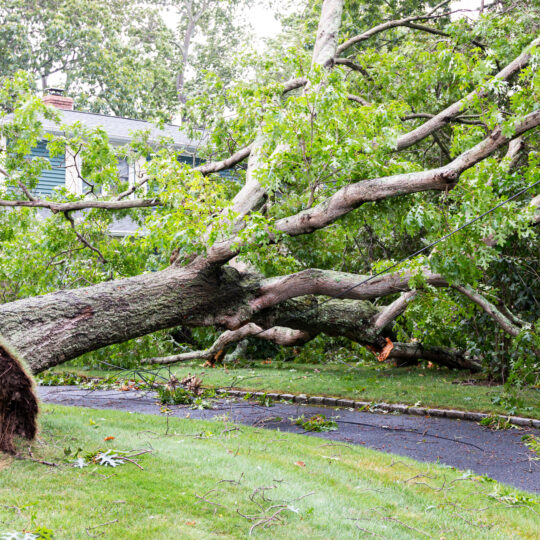When is Tree Removal Not Your Responsibility
And What to do When it is
Posted
September 4, 2025

If a tree falls in a yard, who’s responsible for removal? While laws can differ state to state, there are some guidelines to keep in mind, especially if you live in Pennsylvania. Learn more about who’s responsible for tree removal and what to do before and after a tree falls.
When You’re Not Responsible for Tree Removal
There are several instances when a tree falls and you’re not responsible for removing it:
- It’s on public land. If a tree from a park or road falls on your property, this is for the municipality to handle.
- A severe storm took out a healthy tree on your property. Check with your homeowners insurance, they may cover the cost.
- Your healthy tree fell on your neighbor’s property during a storm. Your neighbor’s homeowners insurance may cover this one.
As long as the tree was healthy before it fell, the law is on your side. However, if the tree was damaged and you and your neighbor knew about it, then you may be more liable. There are ways to help prevent these problems from happening.
When You Are Responsible for Tree Removal
If a hazardous tree on your property falls in your or your neighbor’s yard, who’s responsible? You. If your neighbor has reached out about the tree and/or you knew it was at risk for causing damage, but you neglected to address it, that’s on you.
Dead, diseased, or unhealthy trees pose a risk to itself, surrounding plants, and nearby properties. This is why it’s important to address any concerns sooner rather than later. Especially since later could also mean paying for damage caused by the tree falling.
If the tree is on your property, you are responsible for anything it does to your own property. One of the best ways to prevent damage is to properly maintain this tree by pruning, watering, and treating for pests or disease when necessary.
Before there’s any damage, here’s what to do to help make sure you’re covered:
- Identify the property line: Determine if the tree’s trunk is on your or your neighbor’s property.
- Communicate with neighbors: Help prevent disputes and resolve issues amicably by voicing concerns and coming up with a solution together.
- Regularly maintain your tree: If you notice any signs of health issues, contact a local arborist to assess the tree and offer recommendations.
- Contact authorities: For more detailed information on the tree laws in your area.
- Contact your insurer: Learn more about what damage is covered and what’s not.
Don’t wait until it’s too late. Be proactive about proper tree care to maintain your yard and good neighbor standing.

Download Your FREE Tree Removal Guide
Even dedicated DIYers should think twice before taking on the task of tree removal. Our guide will help you decide whether to hire a tree service and how to get the most value for your money.